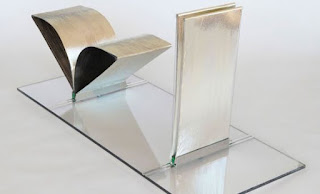Homeostatic Façade System_Decker Yeadon
Project: Homeostatic façade system
Location: No defined
Year: In process
Architect(s): Decker Yeadon
A self-regulating façade system designed by architects in the USA automatically adjusts to suit changing exterior environments, such as sunlight and temperature variations. The Homeostatic Façade System by Decker Yeadon operates on natural principles to keep interior conditions in check.
The system comprises an engineered ribbon, inside the cavity of a double-skin glass façade. The ribbon is made of dielectric elastomers: polymer materials that can be polarized by applying an electrical current. These materials are also flexible and consume very little power.
Both sides of the dielectric material are coated with silver electrodes. This silver layer reflects light, and also distributes electrical charge across the material, causing it to deform. This helps the façade to regulate temperature inside the building.
As environmental conditions change, the charge in the silver layer causes motion using a sensitive actuator. An artificial muscle is created by wrapping the dielectric material over a flexible polymer core. Increased charge causes the elastomer to expand, making the core bend and pulling the elastomer material to one side. This in turn causes the paired halves of the ribbon to bend. The effect is that the façade closes up, with the opaque construction blocking out light.
The architects’ design incorporates ribbons of the dielectric material across the façade. As electricity is passed over the surface, it opens and closes to control solar heat gain through the facade. The huge advantage of this system is highly regulated and specific solar control in a façade.
So is this a smart material, an example of biomimicry – or just canny design? It’s the combination of expertise from various fields that makes design work like this stand out. Understanding natural principles, such as the way a muscle works, are part of the solution. Including the technical knowledge of dielectric materials helps. Adding the vision of applying the principle to a building’s façade makes the design part of what we call the smart environment.
Decker Yeadon is an architecture office based in New York that specialises in incorporating new material technologies in their design to help address contemporary issues. In particular, the architects show that smart materials and nanotechnology can offer solutions to a range of problems, from water conservation to security.
Sources:
-Homeostatic Façade System_Decker Yeadon
http://materia.nl/article/homeostatic-facade-system/
http://thegroyne.com/2014/08/materiales-inteligentes-fusion-perfecta-diseno-tecnologia/
https://www.youtube.com/watch?v=GEipnLf40_Y








No hay comentarios:
Publicar un comentario